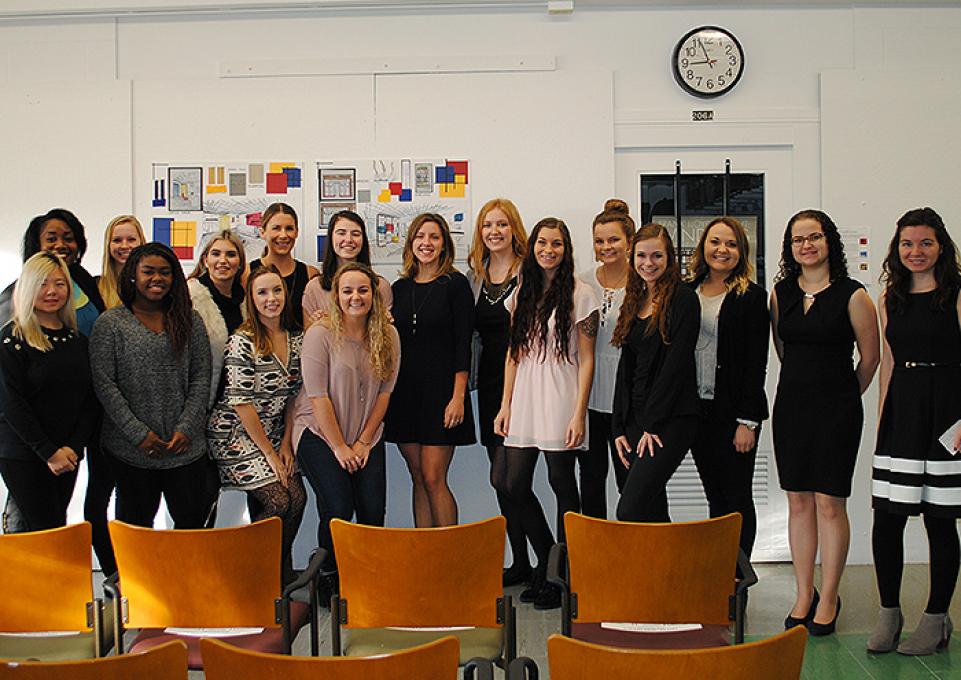
Eric Dolph, assistant professor of interior design, sees the city with its rich architectural heritage as a living laboratory.
A former professional architect in Buffalo, New York, and Erie, Pennsylvania, Dolph understands the need to learn from those who came before and to acquire context from different time periods and styles.
His first-year students are gaining that same understanding through his Elements and Principles of Interior Design course. Approximately 20 students spend Tuesdays studying design concepts in a lecture format. On Thursdays they see the concepts brought to life through the soaring ceilings of downtown cathedrals, the haunting interiors of grain elevators, and the genius of architects like Frank Lloyd Wright.
Dolph has a community partner in this exercise—the non-profit organization Explore Buffalo. Its executive director, Brad Hahn, personally provides the students with the guided tours, lending his historic knowledge of the Queen City.
“It’s a lot of fun and interesting to hear what students know or don’t know about Buffalo. Even ones who grew up here often aren’t familiar with downtown buildings,” Hahn said. “Every time we do this, they’ll point out things I haven’t noticed before. I’m more focused on the history, and they have a much finer eye for the design details.”
At each site, the students take notes, make sketches, and connect what they see with a different architectural element. For their final project, they must return to one of the dozen sites they visited during the semester and analyze all 12 elements.
“I think this has been eye-opening for our students,” Dolph said. “To explore a space that was never designed for humans such as Silo City, they are getting a glimpse of our industrial heritage. Pair that with the chance to take an up-close look at the creations of a couple of the most esteemed architects of our time.”
Another example of how the Interior Design Department connects with the community can be seen in lecturer Raelyn Woltz’s Spatial Experiments course. Her students have been working this fall with the business group Fillmore Forward to help renovate the secondhand store One Man’s Trash Is Another Man’s Treasure, located on Fillmore Avenue.
Working with a budget of just $1,700, the students were charged with designing floor plans and providing furniture and lightening specifications for the store. The students divided into groups of four and presented their designs on November 10 to the store’s owner, Leslie Thomas, and Fillmore Forward members, who will then choose the winning design.
The Junior League of Buffalo will then implement the students’ recommendations.
“This project is the pilot for a larger campaign we are undertaking in the Broadway-Fillmore and Martin Luther King districts,” said Jonathon Ling, Fillmore Forward director. “Our organization hopes this storefront makeover will be the first of many in the district. With the help of Buffalo State’s talented interior design students, we hope to revitalize storefronts in the neighborhood, encourage visitors, and thus, revitalize the economy of the neighborhood.”
